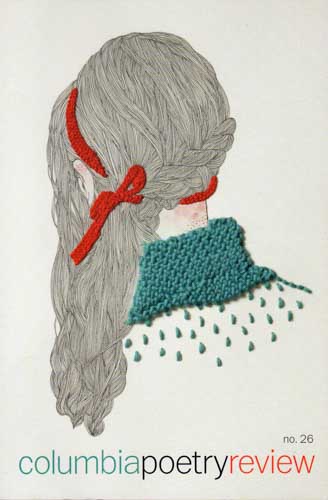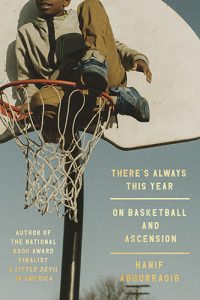Columbia Poetry Review – 2013
When you read the 2013 issue of Columbia Poetry Review, sink into a comfortable chair without distraction and be willing to spend time with imagery that stimulates and verse that reconsiders how we define poetry and its evolution. If you are like me, you’ll want to read this issue a number of times to return to images that intrigue, disturb, or entice in poems structured and unstructured, evocative of surrealism in its almost purest form.
When you read the 2013 issue of Columbia Poetry Review, sink into a comfortable chair without distraction and be willing to spend time with imagery that stimulates and verse that reconsiders how we define poetry and its evolution. If you are like me, you’ll want to read this issue a number of times to return to images that intrigue, disturb, or entice in poems structured and unstructured, evocative of surrealism in its almost purest form.
Many of the poems in the issue seemed to have a disconnect between the title and the lines of verse. In a stream-of-consciousness, automatic-writing sort of way, the poets seem to string together images that are simultaneously real and surreal. In Daniel Scott Parker’s “How to Become Awesome at Skateboarding,” for example, the “you” of the poem is instructed to “Totally nitrous / oxide the slow glide recumbent jelly, / good for teeth to put stars on . . .” And “Limb / the rental Nimbus malady of ground.” Reading this poem makes me lose my balance in its unique use of verbs, as if I were on that skateboard attempting what it might be impossible to achieve. Parker’s poem “Pragmatism” is less surreal than automatic in its listing of images that are at once familiar and frightening, such as,
there is no guilt for like
dropping bombs from 40 miles up
on some place degenerate and fetid
where faces are computerized dots on an 8” screen . . .
Doug Ramspeck’s “Fish Bones” evokes the image of the bones “emptied finally of flesh” without referring once to the fish. Instead, we read “My father— /dandelions a skeleton / of whiteheads—taps / his cane in a vapor trail.” Language unexpected produces thought and image and emotion by the end of the utterance. These poems are ones that I will read and mull over, and hope others will too, in search of the message that is paradoxically elusive and precise.
Kimberly Grey reminds us in “What We Have Lost,” that “We left them in little silver factories, our breathings, and continued on / as things unliving and for a short while, as trees.” Jerome Sala’s “Who Will Be America’s Next Top Mannequin?” reminds us of our service culture in which capitalism is king, where “once people begged to be awakened from their roles / now they must prove / that they can sell in their sleep.” John Kenneth Bishop lets us know that it is okay to be reminded of the mundane while in the midst of something that might be meaningful, remembering “the Cuban place that serves steak and egg sandwiches,” a place of comfort recalled during sex in “The good old days.” These and the other poems in the issue strike chords in just the right places and with all of the right notes.
If I were to assign a theme to this issue, it would probably be “Rituals and other Self-Reflections.” The idea of ritualizing every aspect of life until it has been revered almost too much or just enough to reveal the inner space where religion, mythology, and the awkwardness of everyday life meet. In “I Need to Count on All My Fingers,” poet Laura Eve Engel ritualizes anxiety in such a way that I leave this poem reluctantly and then head back for another read. Her theme seems to be distilled in these lines:
The only decent wants
are chopped up or made to look smaller, as from
a helicopter, blustery machine that comes to rest
on what it likes, rehearsing none of its bigness.
Other poems use ritual or rite in their titles and then upend the idea in the lines of verse. Carmen Giménez Smith’s “Ritual,” Alyssa Davis’ “life/rite,” and Abigail Zimmer’s “Rite for Unmaking,” each reveal something about the ritual that is life, death, and all actions in between. Using images that surprise and confound, these poems question my belief in any one definition of poetry that would encompass such feats of language and voyages into unknown manipulation of thought. I am approached by these poems to consider “an admixture of nanobyte / and coal saint plus animus,” “watching the paint / peel in my room, // peach to white to gray,” and “snow that colors us / darker.” Imagery new to me and to other readers that is a stunning definition without attempting to define, delineate, or identify what each poet presents in scenic bursts.
As a poet I am a bit envious of all of these pieces, and I will admit that some I may never completely understand. I will continue to retrace my steps through this issue, though, searching for signposts, signals, and souvenirs to take away with me and store in a place for safekeeping, one I will no doubt stumble upon in the future when I least expect to. That will be a gift.
[www.colum.edu/columbiapoetryreview]





